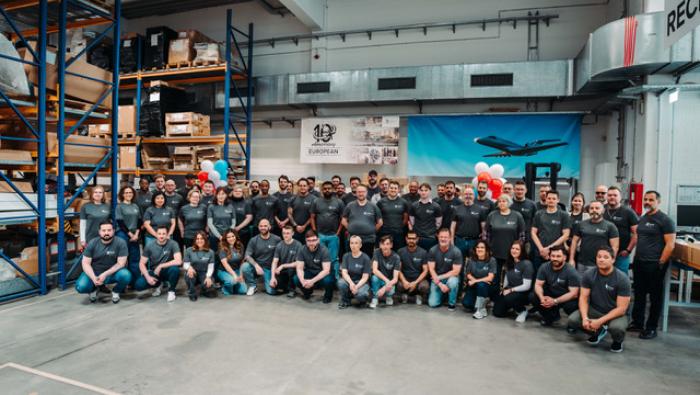Singapore Technologies (ST) Engineering Aerospace is making significant moves in its quest to increase the company’s competitiveness, adding new capabilities and introducing new future technologies in its various maintenance, repair, and overhaul (MRO) portfolio.
“There is a drive in the company to migrate upstream in the value chain and also to develop our own intellectual property to become an OEM of products,” said ST Engineering Aerospace deputy president, Jeffrey Lam. “We have been constantly looking out for the right opportunities, and we know what we are looking for.”
One major move was the acquisition of nacelle manufacturer Middle River Aerostructure Systems (MRAS) in the U.S, worth $56 million, on April 18. “As we want to bring value to the business, it has to extend our capabilities too. Since we currently do not have engine design DNA, expanding into the nacelle systems via MRAS is a very natural extension. It was neither too big nor too small for us as well.”
Lam said there would be opportunities to supply nacelle and "last-mile" work to OEMs outside the U.S., and the company is looking at ways to duplicate and synergize the capabilities to other ST Engineering facilities within a year or two.
The company’s U.S. MROs are among its better-performing facilities. In the first quarter, a U.S.-based operator signed a 10-year deal for heavy maintenance checks for its fleet of 160 Airbus A300s and Boeing 757s at ST Engineering’s San Antonio, Texas, and Pensacola, Florida facilities starting in 2020. This is on top of Bombardier Q400 component repairs for African and European airlines.
Smart MRO
ST Engineering launched the Smart MRO initiative in 2018 with four main elements: robotics, workspace digitalization, data analytics, and additive manufacturing.
One main thrust of the program is the employment of robotics in the work process. For example, ST Engineering has developed a robotic system to grind down the abradable layer on the aircraft engine intake.
Previously a manual process that took five days to complete, the automated system takes one day, with a more consistent result—a 500-percent increase in efficiency. Currently used on the CFM-56 series engines, the robotic grinder can handle 200 engines annually. ST Engineering said it can also recode the robot for other engine types.
Although robotics solutions are easily available in the market, Lam said the adoption rate in the process-driven aerospace industry is relatively slow and authorities are also unsure of how to certify new technologies.
He gave the example of how the Civil Aviation Authority of Singapore (CAAS) currently does not have any certification capability for drones but has approved the trials of using drones for aircraft inspections at Singapore Changi Airport. The next step is to certify the drone inspection as a commercial entity and Lam said the company is prepared to work closely with regulators to give advice on "constructing new certification."
Meanwhile, in April, ST Engineering teamed up with Air New Zealand, Microsoft and Moog to study the feasibility of a blockchain-enabled supply chain, leveraging additive manufacturing (also known as 3D printing) capabilities. A trial was conducted where airline ordered a digital aircraft part file from ST Engineering and printed it in the U.S., with intentions for the part to be installed in an Air New Zealand Boeing 777-300ER.
“There is no doubt that blockchain will be the de facto medium in the future and we stay invested in this technology,” he said, although he admitted that with so many platforms and so many standards, it is hard to identify which the company will invest in.
“If you are the only one in the blockchain, there will be many incomplete records, such as component records,” Lam said. “ There should be a platform with many airlines on it so as to create the critical mass for it to go forward.”
ST Engineering currently has a fused deposition modeling (FDM) printing machine in Singapore that produces plastic parts for CAT 4 (aesthetic) and CAT 3 components (low load, non–structural components). The challenge in 3D printing is proving to regulators that the product is consistent, and the next step is to certify it, regardless of the machining route taken.
The company is now studying powder-bed 3D printing using metals, carried out offsite with partner EOS. It sees greater applications with metal parts especially in airframe maintenance and hopes to produce and test its first metal part by September.
Lam said there is no end date in the company’s Smart MRO quest since technology is always evolving, along with the need for continuous improvement. “A marker is how we are moving ahead of our competitor, and how we translate our customer's expectations with our processes,” Lam said. Many of ST Engineering's customers are pleased with the initiatives, he added, and many hope it can move faster in employing these technologies.
Engineering is not significantly affected by external factors such as the U.S.-China trade tensions and the Boeing 737 Max 8 groundings, claimed Lam, since the MRO sector is more stable versus aircraft manufacturers. However, he said, the company remains alert to the customer’s needs and in touch with the relevant authorities.
According to Lam, the Max groundings could bring opportunities for MRO companies since older aircraft are having to fly more and longer to fill in the gap, creating a greater need to maintain them.







